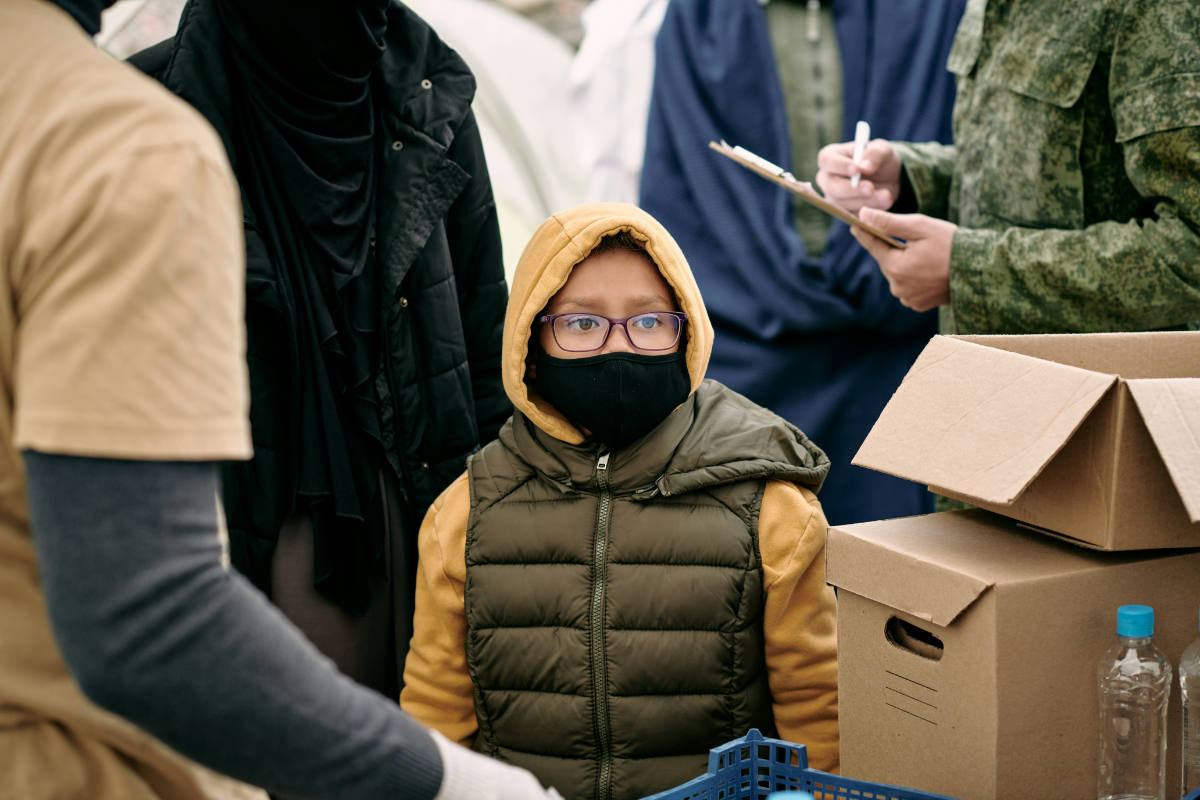Why did you disappear?Your ashamed of your old posts under other names huh
You are using an out of date browser. It may not display this or other websites correctly.
You should upgrade or use an alternative browser.
You should upgrade or use an alternative browser.
Repeal or replace?
- Thread starter Diogenes
- Start date
California receives more welfare than any other state.what another fucking lie from you.
California receives more welfare than any other state.
Yes, California receives and disburses more federal welfare dollars than any other state.Federal welfare funding—primarily through programs like Medicaid (Medi-Cal in California), Temporary Assistance for Needy Families (TANF/CalWORKs), Supplemental Nutrition Assistance Program (SNAP/CalFresh), and related child welfare and social services—flows to states based on formulas incorporating population size, poverty levels, and enrollment.
As the nation's most populous state with nearly 39 million residents and a significant low-income population, California tops the list for total federal welfare allocations.
For example, in fiscal year 2022, California received about $95 billion in federal public welfare transfers (59% of its total $162 billion in federal aid to state and local governments), driven largely by $58 billion for Medi-Cal alone serving over 13 million enrollees.
This dwarfs other states: New York, the next highest, received around $70 billion in similar federal welfare funds, while Texas got about $45 billion.
Nationally, federal welfare spending exceeded $1.1 trillion in 2022, with California accounting for roughly 9% of it.
For disbursement, states like California administer these dollars through local agencies, counties, and providers—handling eligibility, payments, and services for recipients.
California's state budget for 2025-26 incorporates nearly $175 billion in total federal funds, including $137 billion for health and human services (mostly welfare-related), confirming its role in distributing the largest share.
Per capita, California ranks lower (around $2,400 in federal welfare per resident), but total volume remains unmatched due to scale.
These patterns hold in more recent data: Federal welfare outlays totaled about $1.05 trillion in fiscal year 2024, with California's share again leading at over $100 billion when adjusted for ongoing Medicaid expansions and post-pandemic caseloads. Smaller or less populous states like New Mexico or Mississippi receive far less in absolute terms, even if they rely more heavily as a percentage of their budgets.
Gay American just logged in to view the new 2026 health insurance rates
- His family monthly cost is going from $798 to $1,208.91 a month
- Family deductible has gone from $0 to $11,900
- Primary care copays have doubled
- Urgent care copay went from $10 to $60
- Generic prescription copay has doubled
“My husband just had to have a prescription filled that is supposed to be covered by insurance, and you wanna know what the copay was on that after insurance? $1,200 for a prescription on top of the $798 health insurance premium that we just paid.”
“I don't know if we can keep our heads above water next year. I know we're not the only ones going through this, and this just makes me sick.”
He used to only pay $59 per month.

View: https://x.com/WallStreetApes/status/1985888482854924749
- His family monthly cost is going from $798 to $1,208.91 a month
- Family deductible has gone from $0 to $11,900
- Primary care copays have doubled
- Urgent care copay went from $10 to $60
- Generic prescription copay has doubled
“My husband just had to have a prescription filled that is supposed to be covered by insurance, and you wanna know what the copay was on that after insurance? $1,200 for a prescription on top of the $798 health insurance premium that we just paid.”
“I don't know if we can keep our heads above water next year. I know we're not the only ones going through this, and this just makes me sick.”
He used to only pay $59 per month.

View: https://x.com/WallStreetApes/status/1985888482854924749
Tbird19482
Verified User
Well CAL. sends in the second most money to the federal government and doesn't get back even near what it sends in .California receives more welfare than any other state.
https://www.bing.com/search?q=state...tes+that+get+back+more+then+they+pay+in&form=
NY sends in 89 Billion MORE then it gets back and Cal send in 68 Billion MORE then it gets back , a total of $157,000,000,000, that is 157 Billion MORE then they get back from the federal government.
And guess what , it is the southern RED states that get more from the federal government then they send in and it has been that way for YEARS.
Can you back up your lies that NY and CAL get more " welfare " from the Federal government then any other states seeing they pay in way way more then they get back?
IF they are paying in over 157 Billion MORE then they get back how can that be?
Please back up your lies.
That is not proof of your claim
Do you understand a simple level of burden of proof?
Yes, I do, which is why I don't bother much with you gimps, you're just here for comedy relief.
Tbird19482
Verified User
EdwinA I see FACTS are funny to you.
Just what is so funny ?
The fact is NY and CAl send in over 157 Billion dollars MORE then they get back and lying ASSHOLES like Fastlane keep putting out nothing but a bunch of lies saying things like those two states get more back in welfare, How can they when they send all those billions into the Federal government they don't get back.
Just what is so funny ?
The fact is NY and CAl send in over 157 Billion dollars MORE then they get back and lying ASSHOLES like Fastlane keep putting out nothing but a bunch of lies saying things like those two states get more back in welfare, How can they when they send all those billions into the Federal government they don't get back.
Careful with YOUR lies there Tbirdbrain. Show me where I ever said California doesn't send a lot of taxes to the Federal government. I only said California receives more Federal aid from the Federal government than any other state. AND IT DOES. Stop calling other people liars when they are telling the TRUTH . It makes you look like a moron or just a liar or BOTH.Well CAL. sends in the second most money to the federal government and doesn't get back even near what it sends in .
https://www.bing.com/search?q=state...tes+that+get+back+more+then+they+pay+in&form=
NY sends in 89 Billion MORE then it gets back and Cal send in 68 Billion MORE then it gets back , a total of $157,000,000,000, that is 157 Billion MORE then they get back from the federal government.
And guess what , it is the southern RED states that get more from the federal government then they send in and it has been that way for YEARS.
Can you back up your lies that NY and CAL get more " welfare " from the Federal government then any other states seeing they pay in way way more then they get back?
IF they are paying in over 157 Billion MORE then they get back how can that be?
Please back up your lies.
Total federal welfare received by state (2021)
- California: $162.9 billion
- New York: $110.2 billion
- Texas: $105.8 billion
- Florida: $58.8 billion
- Pennsylvania: $57.1 billion
There you go again Tbirdbrain lying again. I only said California receives more Federal aid than any other state AND IT DOES.EdwinA I see FACTS are funny to you.
Just what is so funny ?
The fact is NY and CAl send in over 157 Billion dollars MORE then they get back and lying ASSHOLES like Fastlane keep putting out nothing but a bunch of lies saying things like those two states get more back in welfare, How can they when they send all those billions into the Federal government they don't get back.
Federal Aid by State 2025

Federal Aid by State 2025
Discover population, economy, health, and more with the most comprehensive global statistics at your fingertips.
Tbird19482
Verified User
Read your post 202 " California receives more welfare than any other state" I will ask you how do they receive more welfare from the fed. when they send more money in then they get back?Careful with YOUR lies there Tbirdbrain. Show me where I ever said California doesn't send a lot of taxes to the Federal government. I only said California receives more Federal aid from the Federal government than any other state. AND IT DOES. Stop calling other people liars when they are telling the TRUTH . It makes you look like a moron or just a liar or BOTH.
Total federal welfare received by state (2021)
- California: $162.9 billion
- New York: $110.2 billion
- Texas: $105.8 billion
- Florida: $58.8 billion
- Pennsylvania: $57.1 billion
Have a nice day
Tbird19482
Verified User
Going back and rereading your info I see what you are saying my point is all that money comes from them and they still do not get back nearly as much as they pay in and per person they get a lot less then a lot of red states.There you go again Tbirdbrain lying again. I only said California receives more Federal aid than any other state AND IT DOES.
Federal Aid by State 2025

Federal Aid by State 2025
Discover population, economy, health, and more with the most comprehensive global statistics at your fingertips.worldpopulationreview.com
Sorry I misunderstood your post.
Just be careful who you call a liar because it makes you look like a fool when you are wrong.Read your post 202 " California receives more welfare than any other state" I will ask you how do they receive more welfare from the fed. when they send more money in then they get back?
Have a nice day
Which US states receive the most federal money?
AI Overview
California, Texas, Florida, and New York receive the most federal money
Tbird19482
Verified User
They are only getting more because of their population , as per person they are not getting as much as other states.Just be careful who you call a liar because it makes you look like a fool when you are wrong.
Which US states receive the most federal money?
AI Overview
California, Texas, Florida, and New York receive the most federal money
evince
Truthmatters
And those old names are what?That's never been contested, Desh.
Why did you disappear?
Thank you for admitting all you have is irrational hate of solid factsYes, I do, which is why I don't bother much with you gimps, you're just here for comedy relief.
Stop calling people liars when they are telling the truth.They are only getting more because of their population , as per person they are not getting as much as other states.
Into the Night
Verified User
Taxes aren't welfare, Tball.New York leads the nation in net federal tax contributions. In 2023, it sent over $89 billion more to Washington than it received in return.
California ranks second in absolute tax contributions, generating a net deficit of $68 billion in 2023.
here read the facts and learn something for a change.

states that pay in mote to the federal government and states that get back more then they pay in - Bing
Intelligent search from Bing makes it easier to quickly find what you’re looking for and rewards you.www.bing.com
Into the Night
Verified User
True of every State in the Union, Tball. Taxes are not welfare.Well CAL. sends in the second most money to the federal government and doesn't get back even near what it sends in .
Into the Night
Verified User
Taxes aren't welfare, Tball.Read your post 202 " California receives more welfare than any other state" I will ask you how do they receive more welfare from the fed. when they send more money in then they get back?
Have a nice day
Taxes aren't welfare, Tball.
When he's at a loss for a rebuttal the emojis appear.
